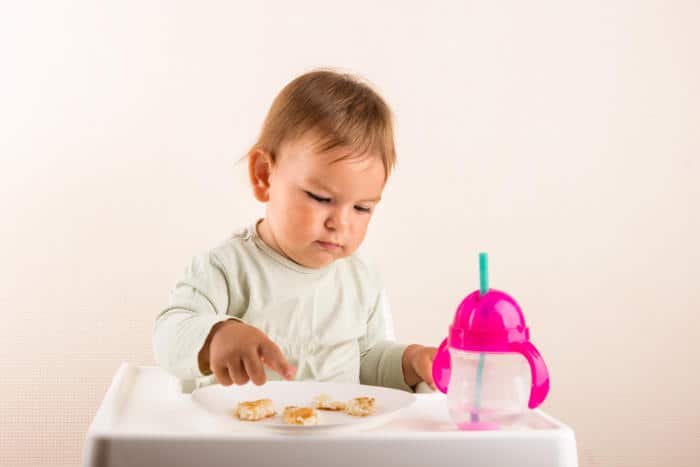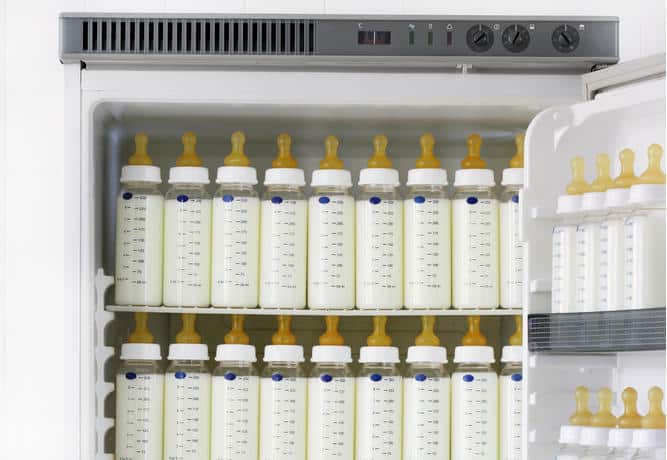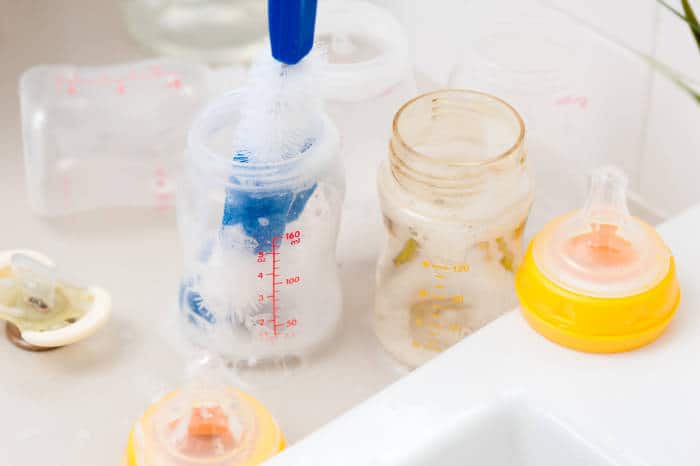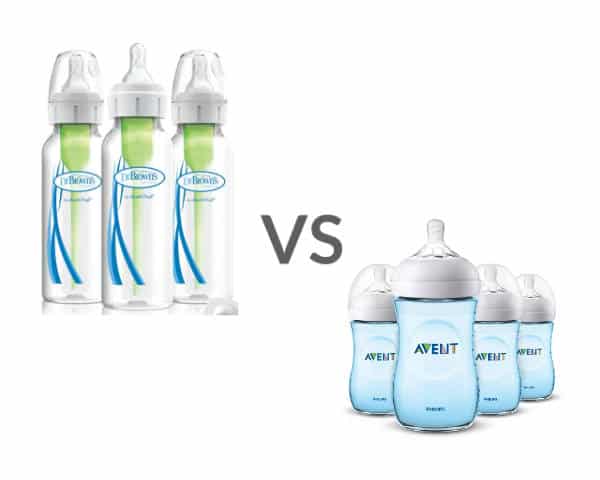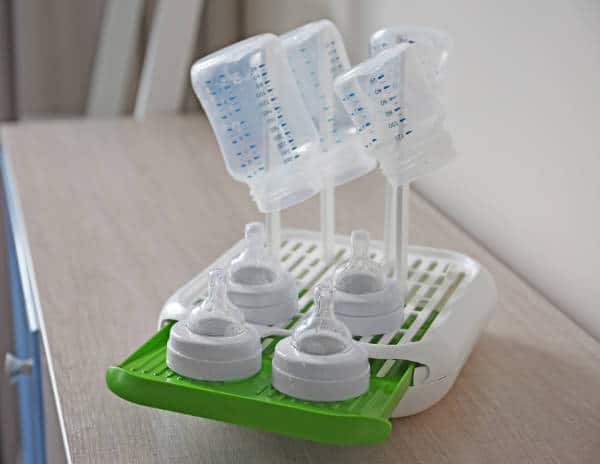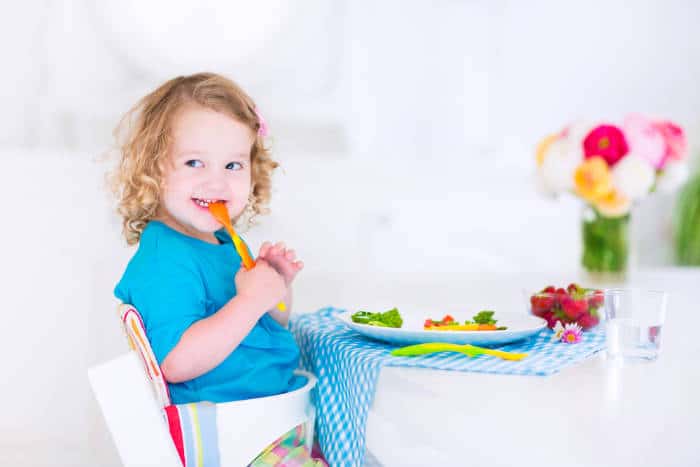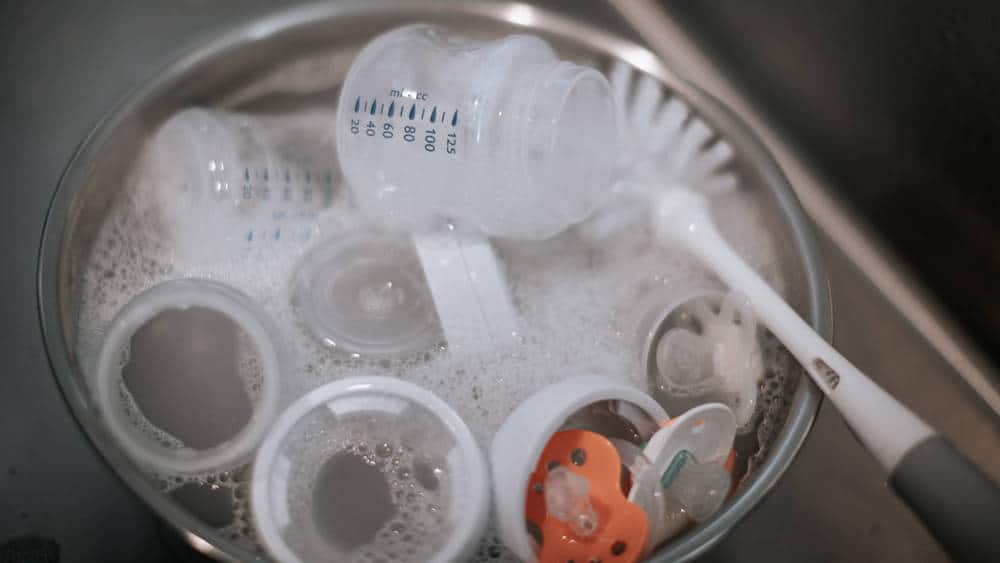Every new parent loves feeding their baby (bottle or breast). It’s an intimate bonding time that is calming for both of you and one of the rare times when new parents get to sit down for a minute.
However, at some point, that sweet cooing baby starts to wiggle and fight for freedom. As much as you try to keep them focused, that desire to wander will eventually make some feeding time chaos. Don’t worry though! It’s a normal part of growing up and their pursuit of independence, which includes holding their bottle.
You might find yourself wondering if it’s too early to turn them loose with formula or breastmilk and what your role will become at bottle time. After all, it’s hard to let go, especially when it means your little one is growing up.
And while it’s bittersweet, we’ve laid out the developmental milestones and why it’s important to let them take charge below. Read on so you can be ready and prepared when that time comes around.
At what age can a baby hold their own bottle?
Babies develop the necessary gross and fine motor skills to hold their own bottles somewhere between 6 and 10 months. One of the main skills to look for when assessing your baby’s ability to hold the bottle is the ability to sit up by themselves for a few minutes at a time.
Like eating solid foods, their readiness depends on other physical milestones. When your baby is able to steady himself without toppling over and as his fine motor skills develop, he is more likely to be able to hold the bottle and tilt it up to drink.

Signs your baby is ready to hold their own bottle
Watch for your baby to grab toys and bring them to his/her mouth while sitting. If they can successfully grab and control the motion of their toys for chewing, that’s a good sign they’d be successful at holding a bottle.
Another sure and obvious sign your baby is ready to take the reins on bottle-feeding, is them reaching for the bottle while you feed them. If they’re insistent on getting their hands in there, let them! Sometimes, it’s better to just let them take the lead. Just keep in mind that you should never let your baby unattended.
Should babies hold their own bottles?
Yup! No need to worry about letting them take over. If they are showing the physical readiness and drive to self feeding with a bottle, it’s a useful and important step in their development. For one, they’re building your baby’s motor skills necessary for feeding themselves and holding cups later down the road.
It also leads to the essential practice of holding their arms/hands at the midline position (the invisible line that divides the two sides of our body). Child development experts and physical therapists understand the importance of the midline as something that allows you to feed yourself, brush your teeth, tie your shoes, or bathe. In short, it’s necessary for virtually everything!
Ways to encourage your little one to hold their own bottle
- Encourage them to lift their hands to their bottle while you are feeding them
- Hand them the empty bottle when you can, so they can practice and feel comfortable handling it
- Offer toys, and teethers while sitting, and guide your baby’s mouth if they don’t do it automatically
- Get a play mat and practice tummy time to build the core and neck strength necessary for self-feeding
Safety first!
While we want our babies to develop new skills and gain more independence, it’s always important for infants to be supervised while eating. In a split second, they can choke as the flow from a bottle can be fast. This is especially true if you’re switching between types of bottles.
That’s why it is important to never ever prop the bottle! It is never a good idea to prop a bottle for infants that cannot hold the bottle independently yet. The flow can be unpredictable and your baby might not be able to accommodate the milk causing them to aspirate. Even if you think your life hack is clever, it can turn tragic in a split second.
So, please, never prop the bottle.
Proper equipment
Not all bottles are created equal. You’ll find out as you get into the groove of bottle feeding, that your baby prefers certain bottles and nipple shapes. As your baby nears the time to take charge of their feedings, you’ll need to think about the shapes of bottles and which ones are easy to hold and maintain a comfortable flow of milk.
For more info take a look at our roundup of the best baby bottles or if your little one happens to suffer from colic checkout the best baby bottles for colic.


